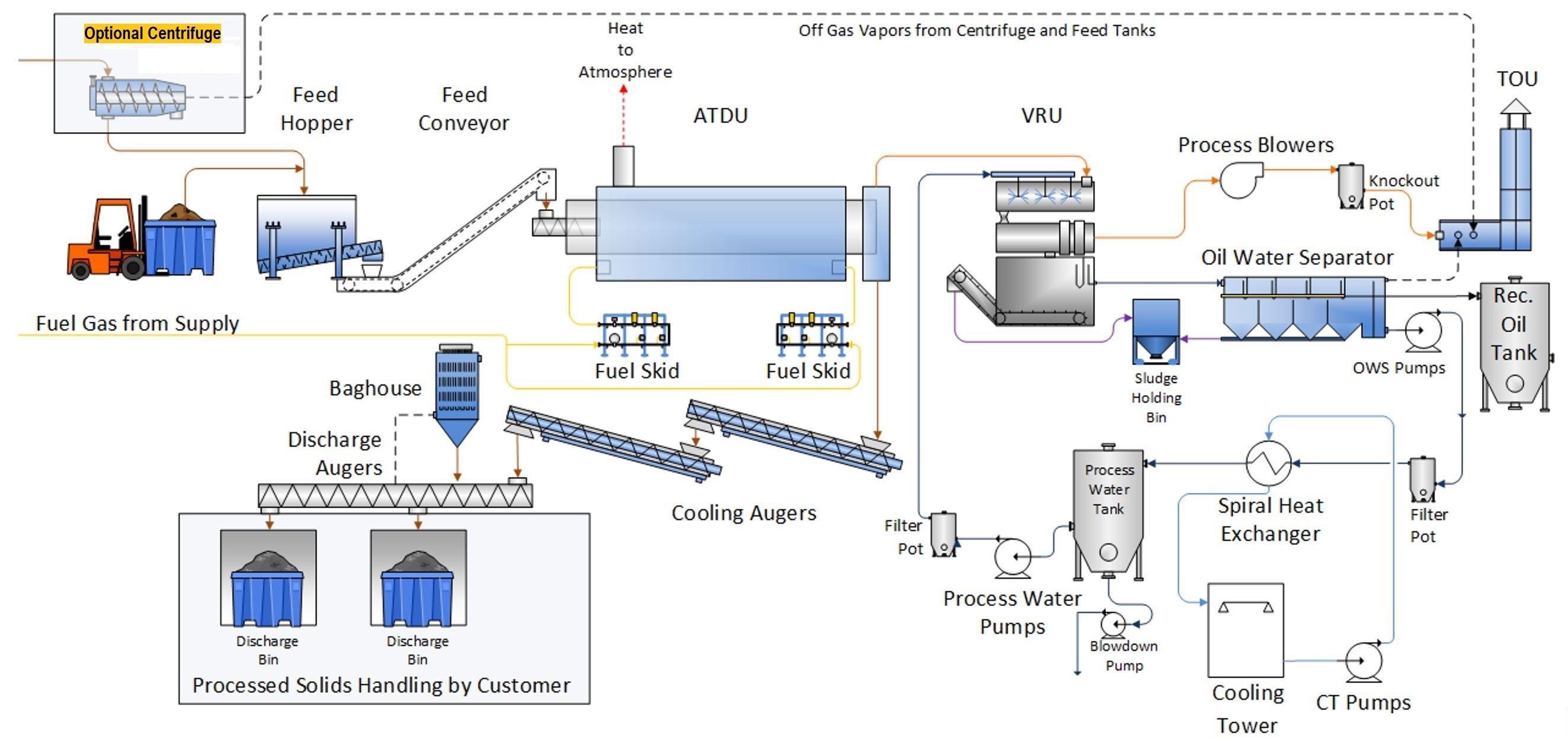Our process starts with material going into the ATDU. Material is transferred to the receiving hopper of the feed system using a front-end loader or crane. An inclined conveyor takes the material from the hopper and transfers the feed to the ATDU through a double tipping valve assembly. Material to be furnished to the ATDU is to be all two (2) inch minus five (5) centimeters.
The ATDU is an indirectly heated rotary drum that is operated in a parallel flow configuration. The burner flame and exhaust gases do not come into contact with the contaminated material. The drum rotates within an insulated chamber that can be heated by combination fuel burners capable of burning natural gas, fuel oil, syngas or propane. As the drum rotates, the contaminated material exposed to the metal surface is continuously renewed, facilitating the transfer of heat from the heated chamber through the drum to the material. The material is then heated to a sufficient temperature to volatilize the contaminants. This is achieved under anaerobic conditions, which prevent oxidation of the hydrocarbons or chemical compounds.
The processed solid material is discharged from the ATDU through a double tipping valve. It is deposited into a pugmill mixer-cooler (standard) where water is injected and mixed for direct contact material cooling. Optional jacketed screw conveyors are available for indirect cooling. With either option, the hot discharged material from the ATDU is cooled using direct or indirect contact with water.
After exiting the ATDU, all process gases undergo a recovery/condensation and cooling process in the Vapor Recovery Unit (VRU). The condensables are processed in the Oil Water Separator (OWS) which is an integral part of the primary Water Treatment Unit (WTU). The recovered water and sludge from the WTU are stored in tanks or roll offs as required by the operator.






